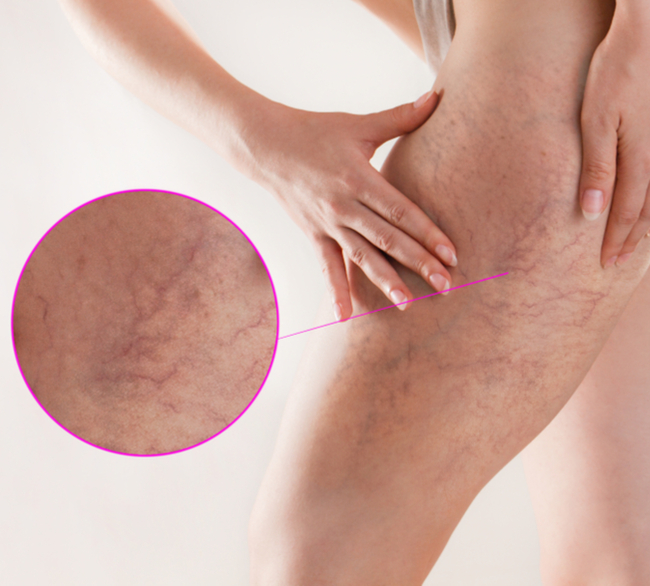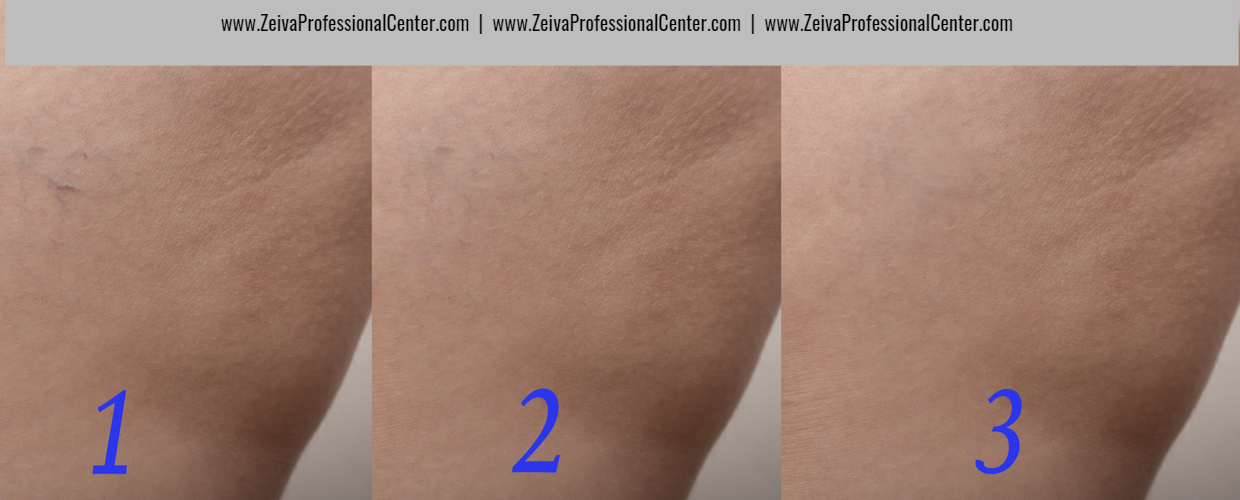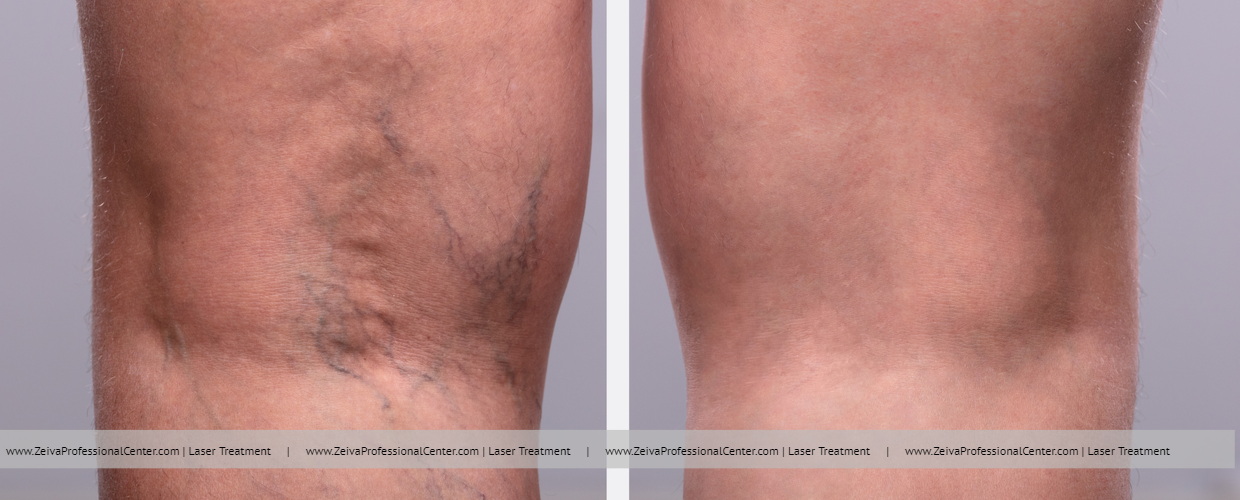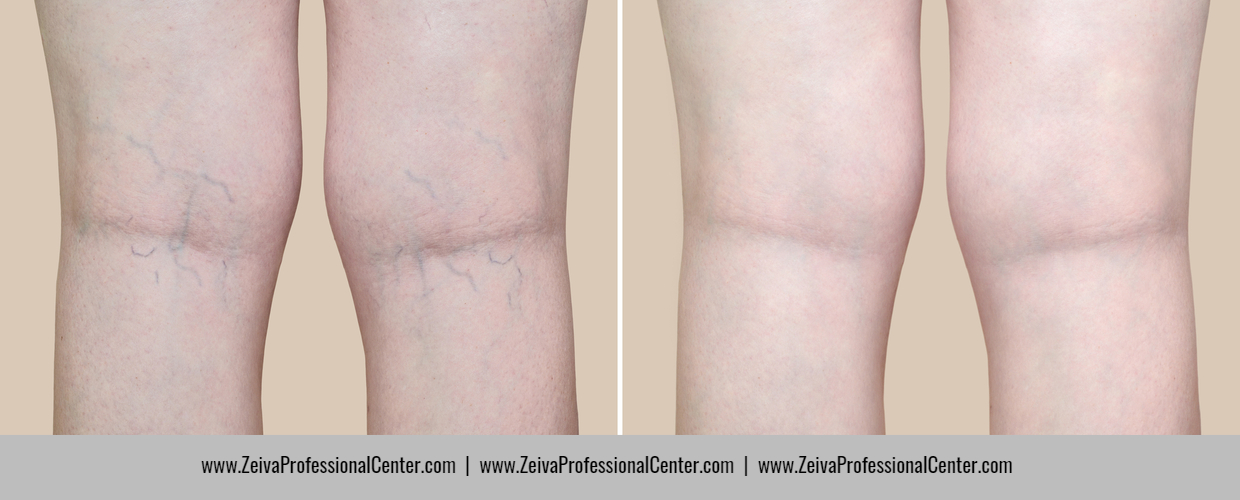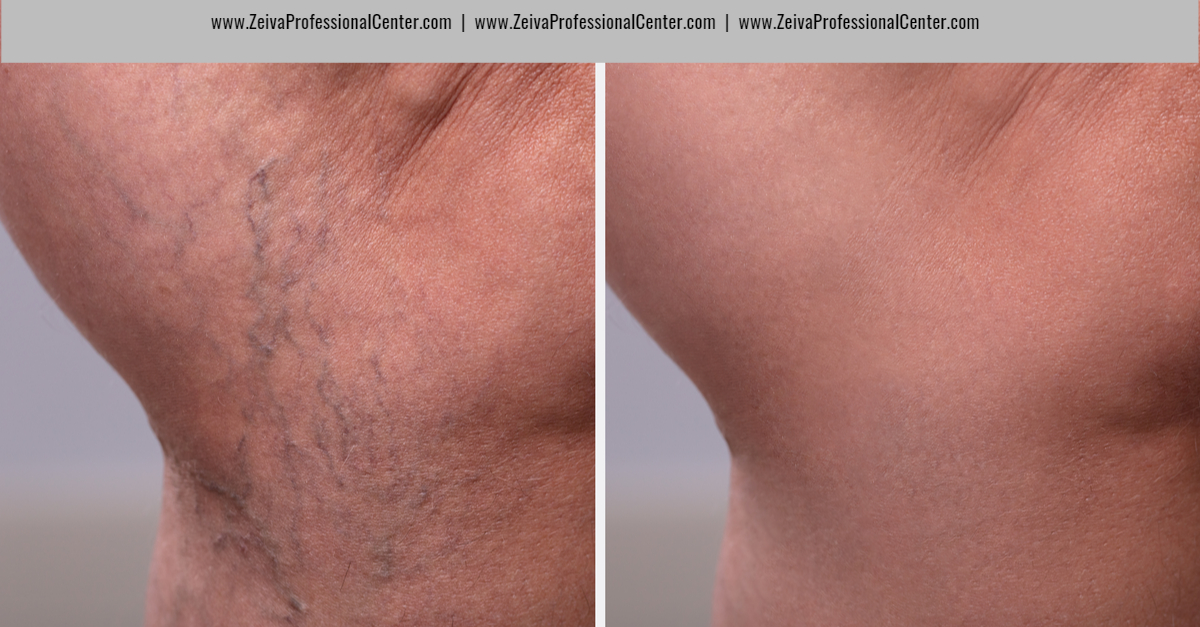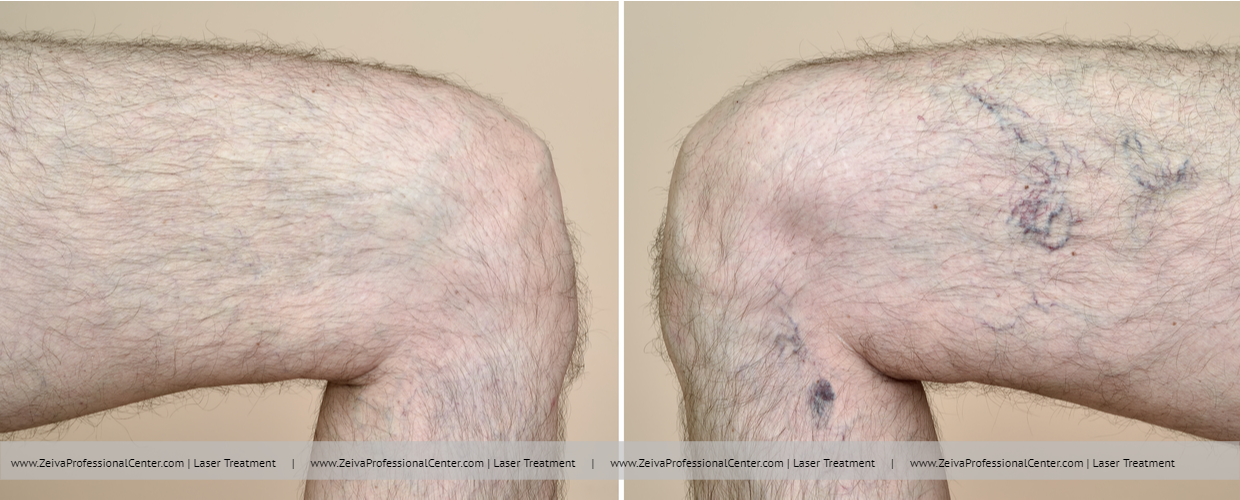SPIDER & VARICOSE VEINS
What Are Spider Veins?
Spider veins (aka ‘telangiectases’) are clusters of dilated blood vessels that develop near the surface of the skin. They’re usually red, blue, or purple, and they get their name because they often resemble a spiderweb.
Precisely what causes them isn’t known, but heredity, pregnancy, obesity, trauma, aging, sun damage, and hormones are all thought to play a role. They can appear anywhere on the body—most commonly, on the legs.
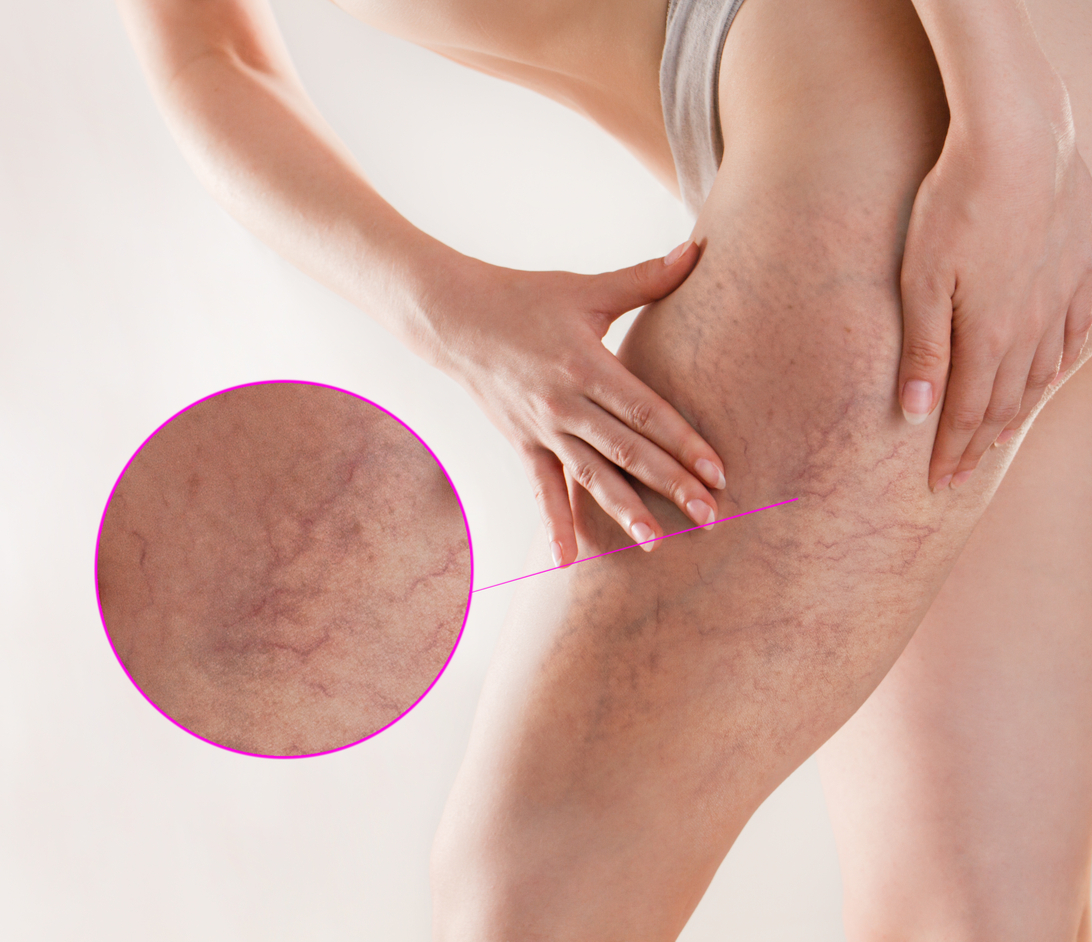
What’s the difference between spider and varicose veins?
Unlike threadlike spiders, varicose veins are enlarged or even bulging. They develop when the one-way valves inside the vessel become weak or damaged. This allows the blood to flow backward and collect, causing the vessels to bulge out.
Other key differences include:
- Size: Spider veins are usually less than one millimeter in diameter, while varicose veins are more than four to five millimeters.
- Symptoms: Spider veins are almost always painless and don’t cause leg swelling. Varicose vein symptoms can include a feeling of heaviness, discomfort, or swelling in the legs.
- Outlook: Spider veins don’t lead to other health problems, but the swelling from varicose veins may cause color changes, sores that won’t heal, blood clots, and other problems.
Spider veins treatment is usually considered cosmetic, while varicose veins treatment may be necessary to keep them from worsening and improve how the legs look and feel.
If you have both types, varicose veins treatment may improve spider veins as well, since they may be fed by a deeper varicose network. For this reason, your doctor should take a medical history and perform a physical exam, possibly even an ultrasound, to see if you have any other signs of venous disease besides what’s visible on the surface.
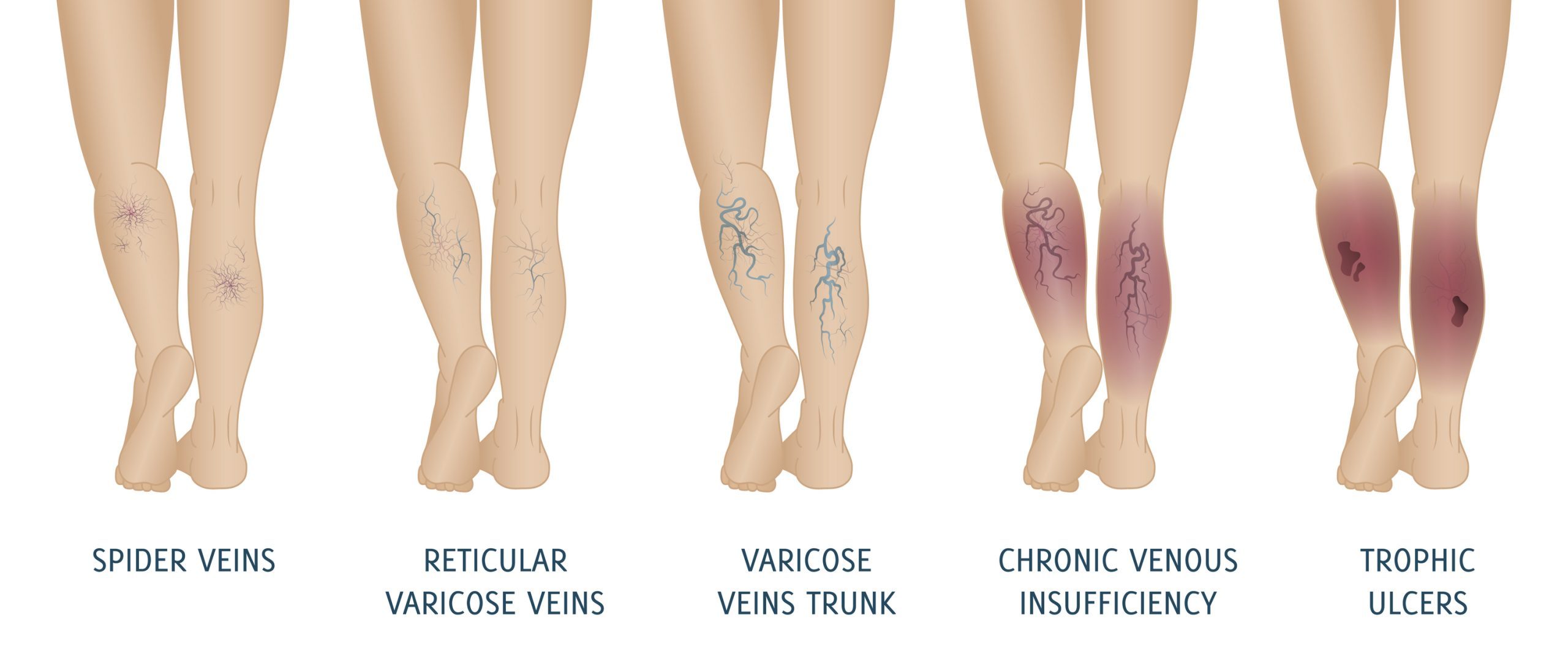
Can you prevent spider veins?
While you can’t avoid the impact of your genetics, it helps to avoid standing for extended periods without taking a break. As well, watching your weight, and wearing compression socks or stockings on a regular basis can be helpful as well.
EFFECTIVE TREATMENTS
What are the most effective spider vein treatments?
Injection therapy, can be painful so, Zeiva uses lasers, to zap tiny (one- to two-millimeter) squiggles, which can be too small to get a needle into, or for those vessels that are sclerotherapy-resistant.
“For stubborn leg veins that don’t respond to sclerotherapy or if a person can’t tolerate sclerotherapy pain or the thought of a needle, lasers are highly effective,” says Zeiva.
Before beginning treatment, it’s important to realize that this tends to be a recurring problem. Treating existing spider veins cannot prevent new spider veins from developing a year or more later, so it’s best to think of this as a procedure where touch-ups may be required periodically.
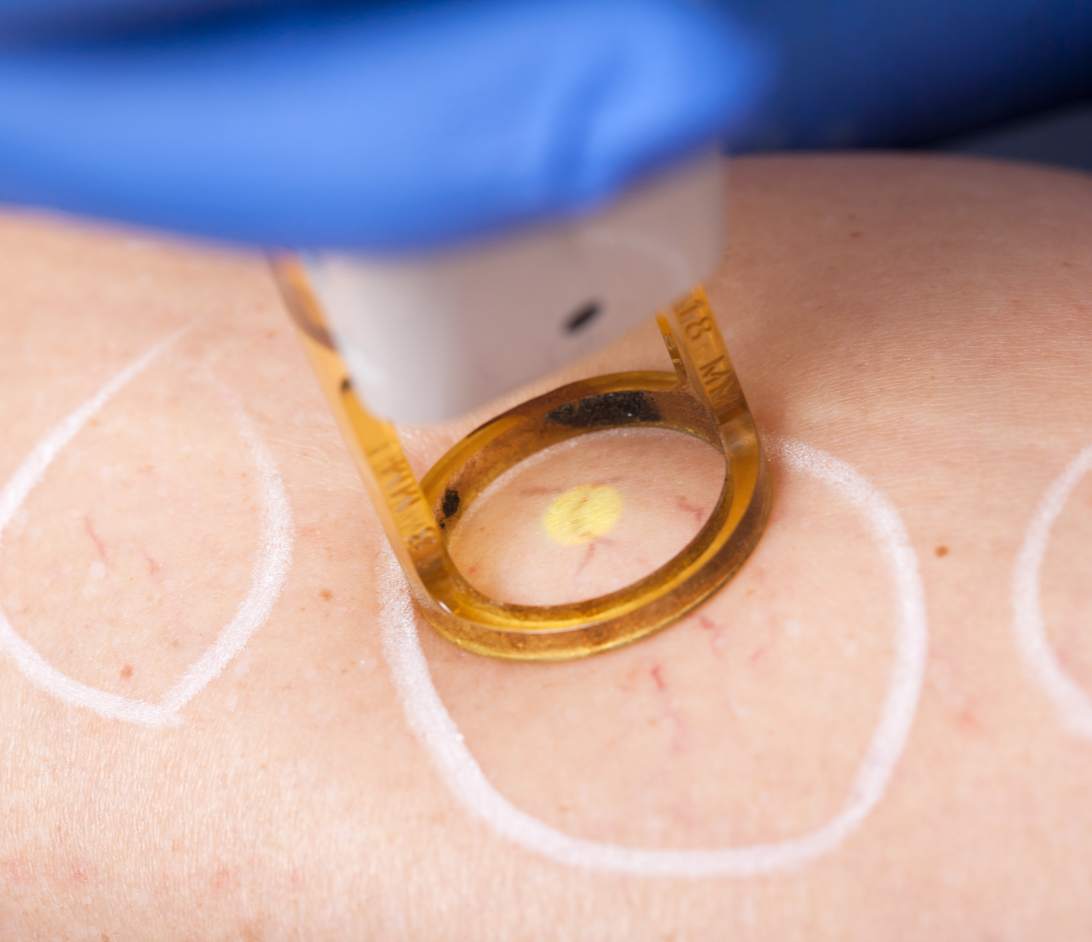
Real Clients – Real Results
Daniella
★★★★★
“Great experience!! Zeiva is so knowledgeable. My daughter and I are definitely going back!!”
Dorothy
★★★★★
“Very professional! Just one treatment and I believe I already see an improvement!”
Helga
★★★★★
“I had the best experience here at this center. Very clean. Very professional. They went above and beyond, and I will definitely stay a long-time customer.”
Betsy
★★★★★
“I ❤ this place! Very professional and great prices. Excellent service!”
TREATMENT
We can help…
We’re here to help you achieve your desired look.
Choose from a variety of skin rejuvenation & body contouring procedures, along with corrective treatments for veins, scars, unwanted hair, age spots and tattoos.
Our technically certified cosmetic estheticians will work with you to enhance your natural beauty.
Schedule a consultation today!
